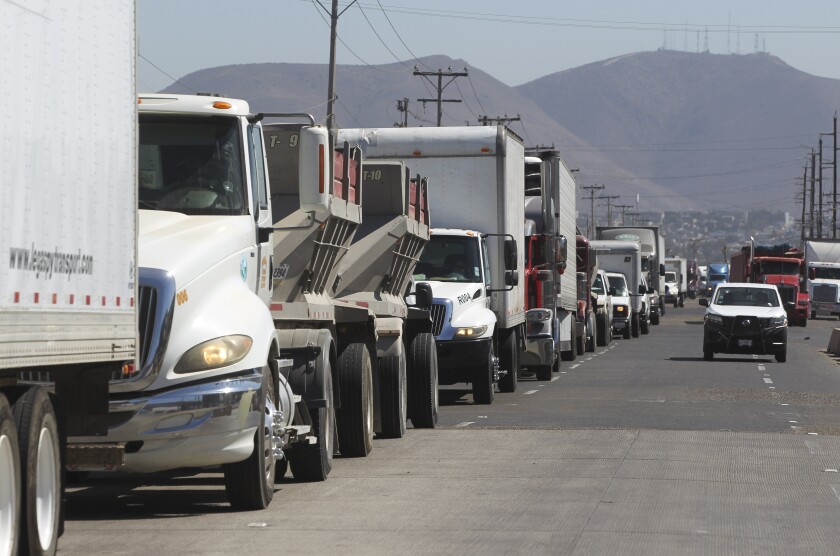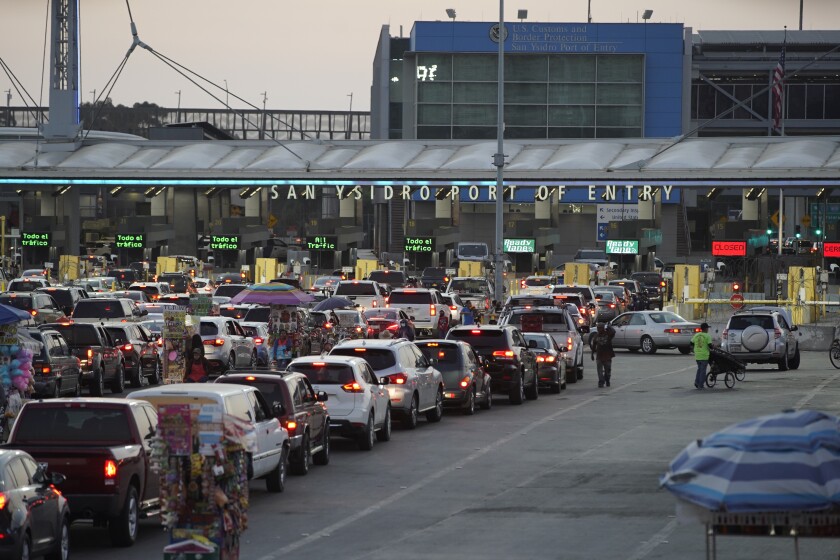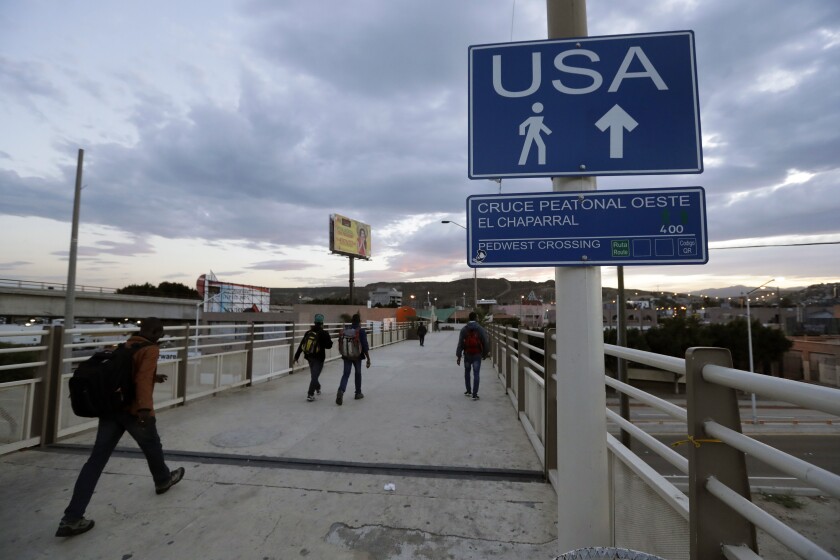The San Diego Union Tribune paper published on their online edition of June 29th, 2021 an opinion editorial written by Miguel Aguirre and Flavio Olivieri, members of bfusion.org.
The editorial can be found in the following link: Opinion: SANDAG must be strategic and plan for a growing San Diego-Tijuana regional economy – The San Diego Union-Tribune (sandiegouniontribune.com)
The purpose of the commentary is to encourage San Diego residents to participate in the public comment period of SANDAG´s 2021 Regional Transportation Plan. Public comment period ends August 6.
The Cross-Border and Bi-national vision needs to be included. We encourage all to participate and have their voice heard. Go to SANDAG´s website: Comment Form – 2021 Regional Plan (sandag.org)
COPY of commentary published on the SD-UT 06-29-2021
Opinion: SANDAG must be strategic and plan for a growing San Diego-Tijuana regional economy

Tijuana’s regional population, in fact, will soon dwarf that of San Diego’s
By MIGUEL AGUIRRE, FLAVIO OLIVIERIJUNE 29, 2021 3:18 PM PT
Aguirre is founder/CEO of Border Fusion Group. He is a native of San Diego and lives in Jamul. Olivieri, PhD., is an expert in binational economic development and consultant for the Border Fusion Group. He is a native of Tijuana and lives in Chula Vista.
California’s population declined in 2020 for the first time in over 100 years; San Diego’s home prices continue to surge with limited affordable housing in sight; and the previous 2050 population forecast by the San Diego Association of Governments (SANDAG) of 4.5 million has been drastically reduced to 3.7 million. Furthermore, the San Diego Regional Economic Development Corp. has estimated by the year 2028 our innovation economy will have a shortage of 10,000 workers a year and noted how San Diego may become an unattractive place to live and do business.
Big question: Where will all the workers supporting our economy come from? SANDAG must tackle these issues strategically, and that is, binationally.
We provide this platform for community commentary free of charge. Thank you to all the Union-Tribune subscribers whose support makes our journalism possible. If you are not a subscriber, please consider becoming one today.Support our journalists
Tijuana’s own regional growth is soaring all the way to the wine countries of Ensenada, Tecate and Rosarito. Over the last couple decades, tens if not hundreds of thousands of people from San Diego, Los Angeles, Riverside and beyond have flocked south to forge new lives just across the border, either permanently, or as Baja-based commuters with U.S. employment, much like what is happening in Costa Rica with other parts of the world.
Tijuana’s regional population, in fact, will soon dwarf that of San Diego’s, offering new social innovation, workforce development, high-quality affordable housing and improved quality of life partnerships.
Yet stakeholders are battling to be heard and understood, insisting on calling our daily cross-border mobility dynamic what it is: a binational corridor, which serves a powerhouse home region. A binational corridor between Baja and Los Angeles jointly offers high-level environmental and economic solutions for our binational region. Baja’s affordable housing and urban lifestyle and a global industries culture with beautiful coastal weather is why. Despite excessive border wait times, motivated economic warriors (border crossers) prove it every day in sustaining not only San Diego’s quality of life, but their own, too.
In a fiercely competitive global economy, the U.S. needs Mexico to compete with China. As proposed, SANDAG’s $160 billion regional transportation plan would haul workers to cross-town job centers, overlooking these important macroeconomic and competitive trade components that ultimately impact our communities. Instead, we need bold leadership and transparency, especially for marginalized border communities traditionally viewed as mere pass-through places. We can help bridge U.S.-Mexico socioeconomic disparities with integrated economic design that eliminates stigmas associated with crossing borders. Strategic pedestrian friendly cross-border districts would also reduce excessive border wait times (vehicles idling 24-7) and reduce greenhouse gas emissions.
Most importantly, our young people must believe in an effective binational relationship that contributes to our greater economic security. Homeland Security, Commerce and State department and other high-level officials who advocate for North American trade competitiveness have much to gain by improving our connectivity and cultural integration. Yet, it is up to us, really, to think outside our current planning scope. The end of the line is just the start for most cross-border commuters who trek from Baja to San Diego jobs. Reverse travel is illustrated by Tijuana’s explosive growth and magnificent high-rise skyline, anchored by a globally attractive medical tourism industry within walking distance of San Diego’s border.
Read more opinions on the U.S.-Mexico border:


While some San Diego cities may not want transit expansion in their communities, their children and most young people (our future) will most likely choose modern high-speed transit and smart ride options over costly auto ownership. After all, “it’s the economy…” This is especially true if it means thriving in the exciting international hustle and bustle that “strategic central hubs” can represent all the way from Baja to L.A., Silicon Valley and San Francisco.
Becoming an exemplary North American-Pacific Rim showcase should be embraced wholeheartedly. If the Europeans and Chinese can effectively link their regions with high-speed rail, we can also. Indeed, the true design-planning opportunity at hand is San Diego-Tijuana strategically emerging by linking the coastal California(s) in solidarity.
Without present acceptance of this realistic equation, SANDAG’s planning may falter and forfeit the beyond to another future, which could put our economic and environmental sustainability at peril. This is why many regional thought leaders and stakeholders are putting forth informative and visionary platforms to awaken our binational citizenry. See bfusion.org, home2024.com and smartbordercoalition.com.
We are calling upon our fellow Californians to engage more “economically” during SANDAG’s public comment period through Aug. 6. Complete mobility corridors implementing such a transborder view will help “ground” in our home region North America’s leading presence in the world. Calling our cross-border dynamic what it is will “elevate” our multi-cultural communities into a global trade reality rich in wonder and fulfilling opportunity. Binational corridors and strategic transit hubs are the most economical way forward.

